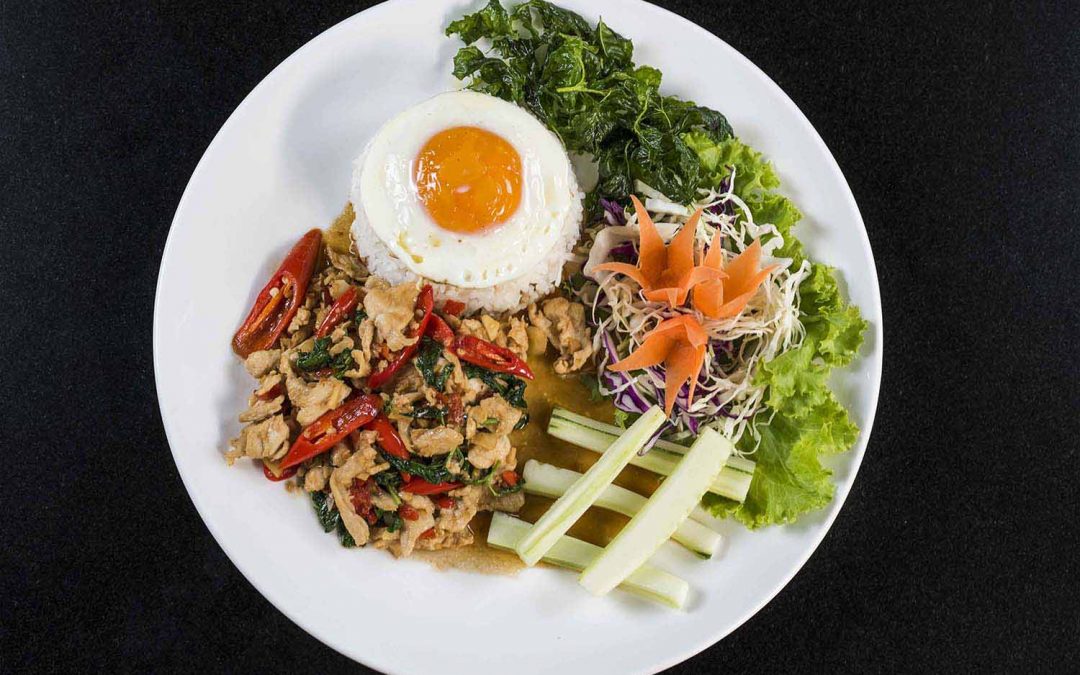The national cuisine of Thailand is one of the country’s most valuable treasures. It’s world-renowned for its bold and bright flavors, attention to detail, and heavy reliance on medicinal ingredients. On top of that, the country’s rich and multi-faceted history has had such a hand in shaping its evolution—one that goes back centuries and countless generations—that it would be impossible to cover all its aspects in one sitting.
That’s why in this article, we’ll be focusing on a specific aspect of Thai cuisine that has to do with other countries. More specifically, we’ll be talking about the different foreign influences that have shaped Thai cuisine’s development. We’ll even give you a few examples of the most popular dishes borne from these interactions. Let’s dive right in!
Malaysia, Burma, and Laos
As three of Thailand’s neighboring countries, these three nations contributed a great deal of influence over the local cuisine. To the north, frequent trade across borders meant that Burmese and Laotian ingredients and cooking methods became widespread—giving way to dishes like sai ua (pork sausage). At the southern end of Thailand, the same can be observed with Malay-inspired dishes like sate (grilled meat) and the prevalent use of coconut milk and ground turmeric.
China
Some of the most beloved Thai dishes have roots in Chinese origins. As early as the 15th century, Chinese settlers were finding their way into Thailand, bringing with them culinary ideas that are still around today. The Chinese brought dishes that would eventually evolve into what we now enjoy as joke (rice porridge) and salapao (steamed buns). They also introduced the steel wok which, of course, meant that stir- and deep-frying techniques soon became popular.
India
Some of Thailand’s most popular dishes are curries—delicious meat stews that can be traced back to Indian origins. It is unclear when in the past traders from India reached Thailand, but we do know they brought with them new flavors in the form of dried spices. These ingredients would eventually give rise to iconic dishes such as kaeng kari (yellow curry).
Portugal
It was in the 15th century when international trade between nations flourished, and this era marked the time that European influences started to incorporate into Thailand’s culture. In terms of food, new techniques were introduced to Thais that became the inspiration for iconic dishes such as foi thong, a golden, angel-hair-like dessert that is made with eggs, coconut milk, and syrup.
Americas
One of the most notable ingredients in Thai cooking is chili, which was brought to the region from North and South America by European ships. Other ingredients like corn, tomatoes, cilantro, pineapple, and peanuts, were also brought over by traders. All of these items are now found to be used in many of Thailand’s favorite dishes.
Wrapping up –
These days, many foreign influences are continuing to shape Thai cuisine. This is made exponentially faster now that the world is much smaller than it used to be. What this might mean for the future of Thai food, we can only guess. One thing’s for sure, though: We’re definitely excited to get a taste of it!
If you want to experience good Thai food in all its modern-day glory, please visit us in Bangkok and try any of our mouth-watering creations!

